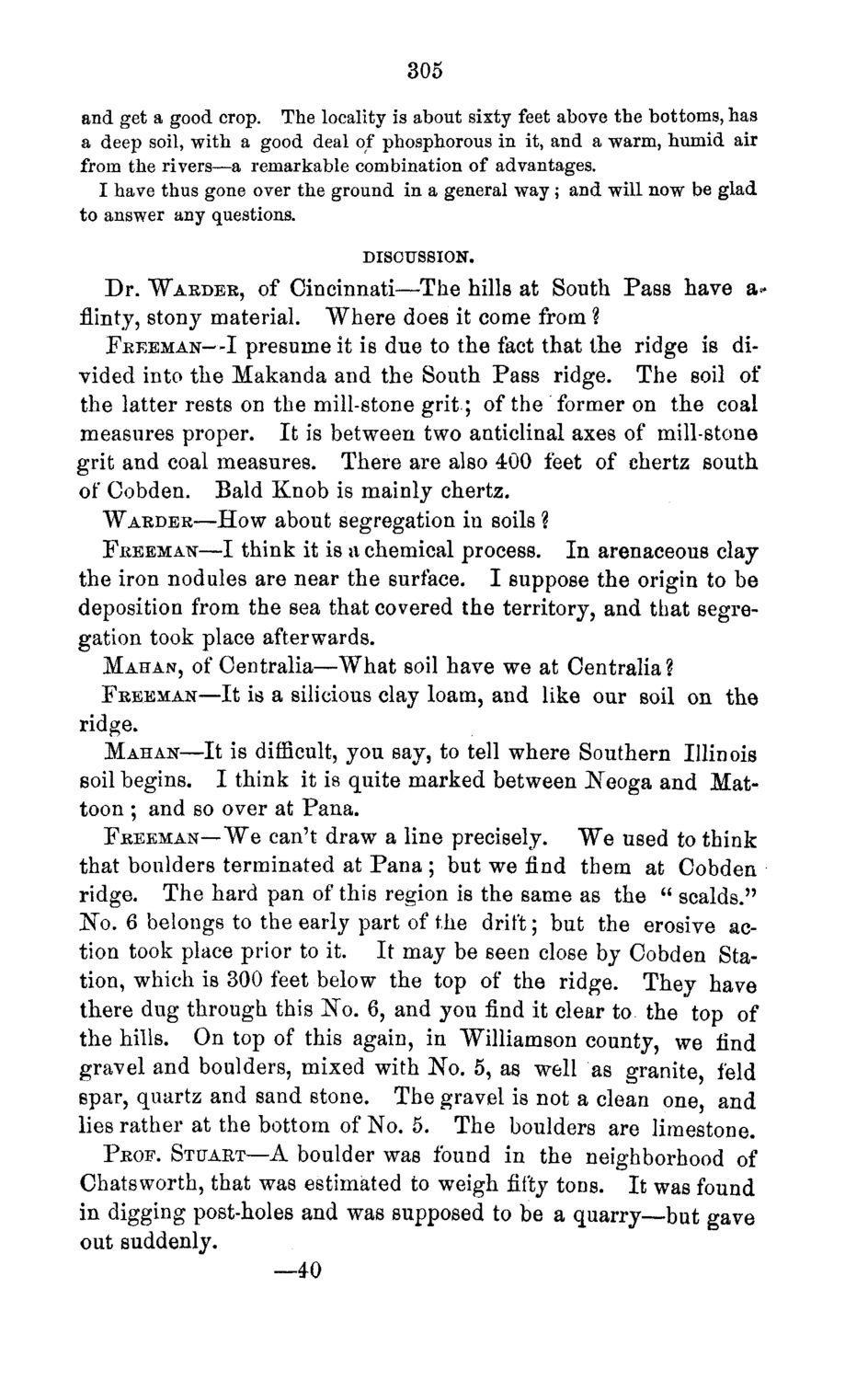| |
| |
Caption: Board of Trustees Minutes - 1870
This is a reduced-resolution page image for fast online browsing.

EXTRACTED TEXT FROM PAGE:
305 and get a good crop. The locality is about sixty feet above the bottoms, has a deep soil, with a good deal of phosphorous in it, and a warm, humid air from the rivers—a remarkable combination of advantages. I have thus gone over the ground in a general way ; and will now be glad to answer any questions. DISCUSSION. Dr. "WARDER, of Cincinnati—The hills at South Pass have a* flinty, stony material. Where does it come from ? FREEMAN—I presume it is due to the fact that the ridge is divided into the Makanda and the South Pass ridge. The soil of the latter rests on the mill-stone grit; of the former on the coal measures proper. It is between two anticlinal axes of mill-stone grit and coal measures. There are also 400 feet of chertz south of Cobden. Bald Knob is mainly chertz. WARDER—How about segregation in soils % FREEMAN—I think it is a chemical process. In arenaceous clay the iron nodules are near the surface. I suppose the origin to be deposition from the sea that covered the territory, and that segregation took place afterwards. MAHAN, of Gentralia—What soil have we at Oentralia? FREEMAN—It is a silicious clay loam, and like our soil on the ridge. MAHAN—It is difficult, you say, to tell where Southern Illinois soil begins. I think it is quite marked between Neoga and Mattoon ; and so over at Pana. FREEMAN—-We can't draw a line precisely. W e used to think that boulders terminated at Pana ; but we find them at Cobden ridge. The hard pan of this region is the same as the " scalds." No. 6 belongs to the early part of the drift; but the erosive action took place prior to it. It may be seen close by Cobden Station, which is 300 feet below the top of the ridge. They have there dug through this No. 6, and you find it clear to the top of the hills. On top of this again, in Williamson county, we find gravel and boulders, mixed with No. 5, as well as granite, feld spar, quartz and sand stone. The gravel is not a clean one, and lies rather at the bottom of No. 5. The boulders are limestone. PROF. STUART—A boulder was found in the neighborhood of Chatsworth, that was estimated to weigh fifty toos. It was found in digging post-holes and was supposed to be a quarry—but gave out suddenly. —40
| |